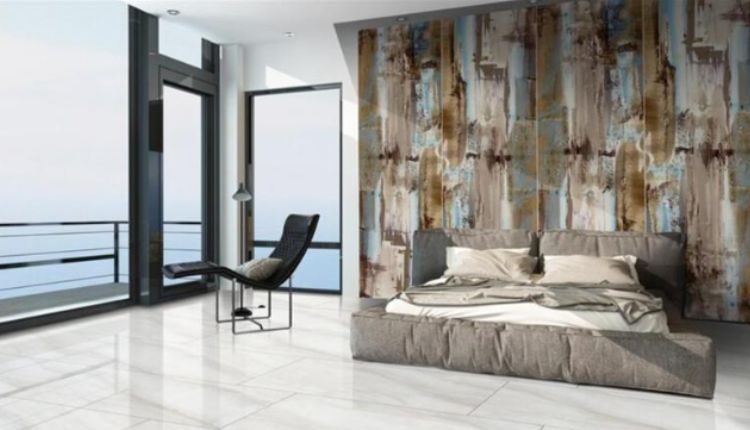Selecting the perfect flooring for a home involves more than just picking a color or style—it’s about finding the right material for each specific space. Every room has unique requirements, from durability and moisture resistance to comfort and design. Understanding these differences can help homeowners make informed decisions that improve both functionality and aesthetic appeal. For those seeking expert guidance and installation, working with experienced flooring contractors in Missoula ensures each room is outfitted with flooring that fits its needs and stands the test of time. This guide explores the best flooring options by room to help homeowners plan effectively.
Living Room – Hardwood or Luxury Vinyl for Durability and Aesthetic Appeal
The living room is often the centerpiece of a home—a space for entertaining guests, relaxing with family, and showcasing personal style. As such, the flooring needs to balance durability with visual appeal.
- Hardwood Flooring: Hardwood offers a classic, timeless look that complements both traditional and modern interiors. It’s durable, long-lasting, and adds real value to the home. With proper care, hardwood can withstand years of foot traffic and still look beautiful.
- Luxury Vinyl Plank (LVP): Luxury vinyl is an affordable and resilient alternative to hardwood. It mimics the appearance of natural wood but offers increased resistance to scratches, dents, and moisture. It’s an ideal choice for households with pets or children, as it combines beauty with practicality.
- Consider Area Rugs: Regardless of the base flooring, area rugs can add warmth and color while protecting high-traffic zones from wear and tear.
Kitchen – Tile or Waterproof Laminate to Handle Spills and Heavy Use
The kitchen is a high-traffic, high-risk area when it comes to flooring. Spills, heat, and heavy footfall are all part of daily life here, so the flooring must be tough and easy to maintain.
- Ceramic or Porcelain Tile: Tiles are a top choice for kitchens because they’re highly durable and water-resistant. They’re also easy to clean and come in a variety of colors and patterns to suit any design theme.
- Waterproof Laminate: Laminate has evolved over the years to include waterproof options. It offers a softer feel underfoot compared to tile and comes in styles that resemble wood, stone, or tile. It’s a budget-friendly solution that handles kitchen conditions well.
- Anti-Slip Finishes: For safety, especially in homes with children or elderly residents, choosing tile or laminate with a textured or anti-slip finish can help prevent accidents.
Bathrooms – Porcelain or Ceramic Tile for Moisture Resistance
Bathrooms require flooring that can stand up to constant humidity, splashes, and spills. Water resistance is the most important factor in this space.
- Porcelain Tile: Porcelain tile is denser and more water-resistant than standard ceramic, making it an ideal choice for bathrooms. It’s available in countless designs, including those that mimic wood or stone, offering a stylish look with practical performance.
- Ceramic Tile: Ceramic is slightly less water-resistant than porcelain, but still an excellent option. It tends to be more affordable and comes in an array of shapes, sizes, and finishes.
- Grout Considerations: Proper sealing and regular maintenance of grout lines help prevent mold and mildew buildup in wet environments. Epoxy grout offers extra protection against moisture.
Bedrooms – Carpet or Engineered Wood for Comfort and Warmth
Bedroom flooring should promote relaxation and comfort. It doesn’t need to be as tough as kitchen or bathroom flooring, but it should still provide a cozy and inviting feel.
- Carpet: Carpet is a top pick for bedrooms due to its softness, warmth, and sound-dampening properties. It makes waking up in the morning more comfortable and adds an element of plush luxury to the space.
- Engineered Wood: For homeowners who prefer a wood look in the bedroom, engineered wood is a smart choice. It offers the elegance of hardwood with added stability due to its layered construction, which resists expansion and contraction from humidity.
- Hypoallergenic Options: For allergy-prone individuals, low-pile carpets or hard flooring with washable area rugs can help reduce allergens in the bedroom.
Basement – Waterproof Vinyl Planks or Concrete Sealant for Moisture Control
Basements are often prone to dampness and potential flooding, so moisture resistance and durability are key considerations when choosing flooring for this space.
- Waterproof Vinyl Planks: These planks are designed specifically to withstand moisture and are ideal for below-grade installations. They’re durable, easy to install, and come in a variety of styles to suit finished basements.
- Concrete with Sealant: If a modern, industrial look is preferred—or if the basement will serve primarily as storage or utility space—sealed concrete is an economical and low-maintenance option. Properly sealed concrete resists moisture and can even be painted or stained for decorative purposes.
- Moisture Barriers: Before installing any flooring, especially over concrete, it’s essential to check for moisture and install a vapor barrier if needed. This prevents mold growth and damage to the flooring material over time.
Conclusion
Choosing the right flooring is about more than just aesthetics—it’s about understanding the specific needs of each room and selecting materials that will perform well under those conditions. From cozy carpets in the bedroom to water-resistant tile in the bathroom and durable luxury vinyl in the basement, every space requires a thoughtful approach. By working with trusted flooring contractors, homeowners can ensure proper installation and receive professional advice tailored to their lifestyle and budget. Investing in the right flooring enhances comfort, adds value to the home, and ensures long-lasting satisfaction in every room.






